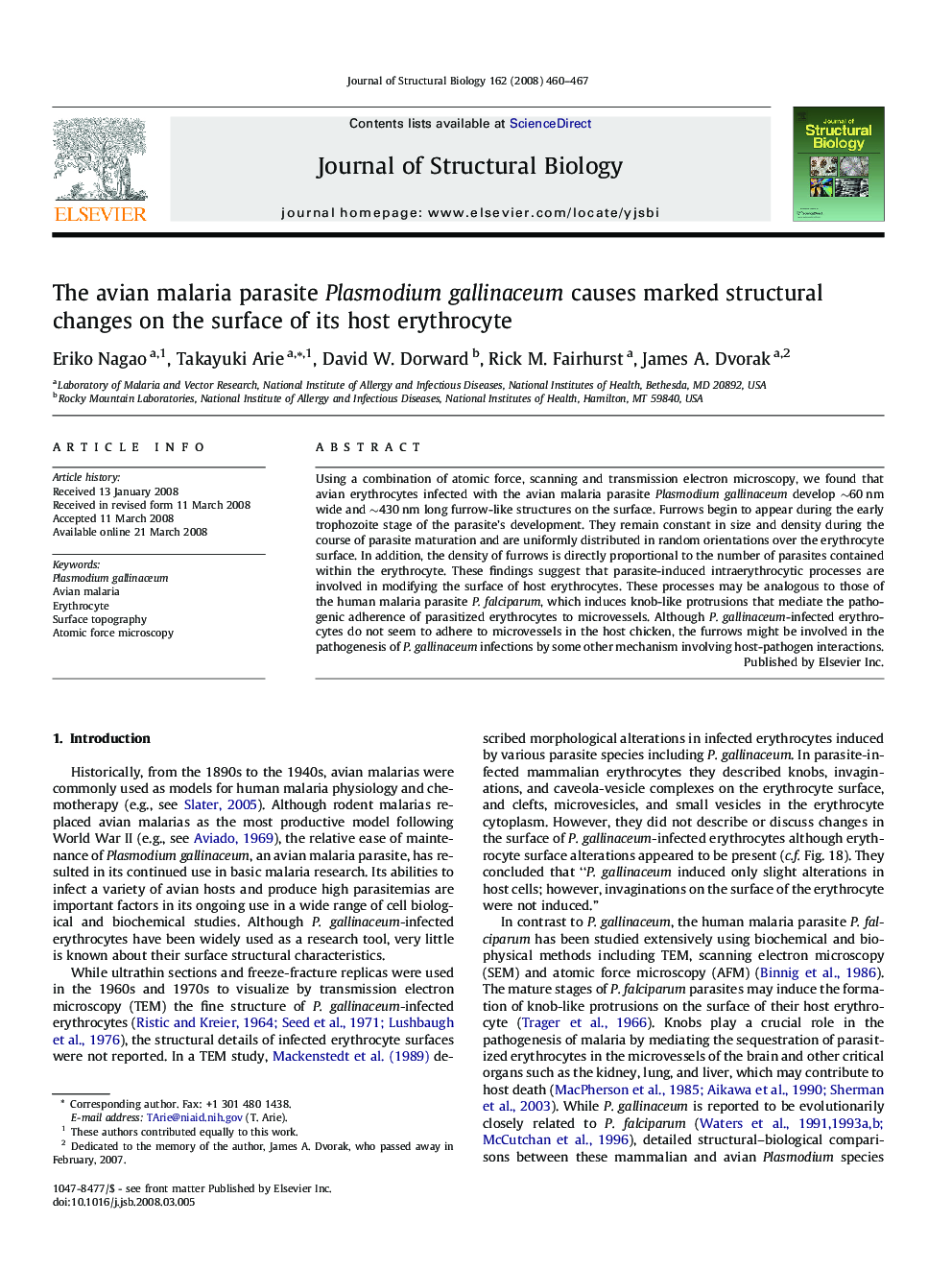| کد مقاله | کد نشریه | سال انتشار | مقاله انگلیسی | نسخه تمام متن |
|---|---|---|---|---|
| 2829176 | 1162792 | 2008 | 8 صفحه PDF | دانلود رایگان |

Using a combination of atomic force, scanning and transmission electron microscopy, we found that avian erythrocytes infected with the avian malaria parasite Plasmodium gallinaceum develop ∼60 nm wide and ∼430 nm long furrow-like structures on the surface. Furrows begin to appear during the early trophozoite stage of the parasite’s development. They remain constant in size and density during the course of parasite maturation and are uniformly distributed in random orientations over the erythrocyte surface. In addition, the density of furrows is directly proportional to the number of parasites contained within the erythrocyte. These findings suggest that parasite-induced intraerythrocytic processes are involved in modifying the surface of host erythrocytes. These processes may be analogous to those of the human malaria parasite P. falciparum, which induces knob-like protrusions that mediate the pathogenic adherence of parasitized erythrocytes to microvessels. Although P. gallinaceum-infected erythrocytes do not seem to adhere to microvessels in the host chicken, the furrows might be involved in the pathogenesis of P. gallinaceum infections by some other mechanism involving host-pathogen interactions.
Journal: Journal of Structural Biology - Volume 162, Issue 3, June 2008, Pages 460–467